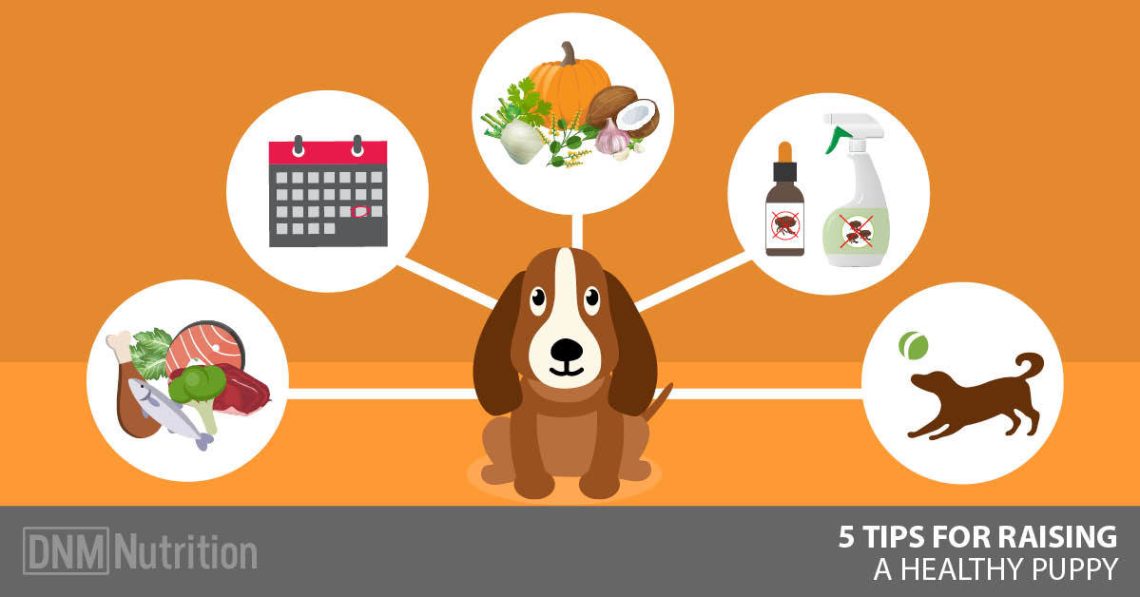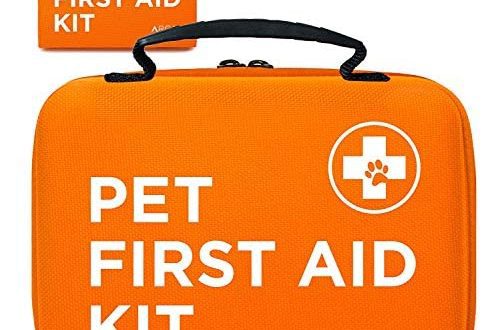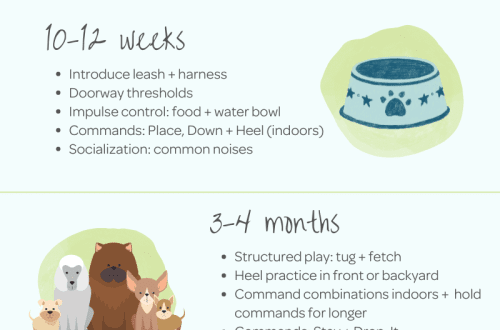
Raising a puppy: what you need to know about it
Puppies are wonderful creatures, but let’s be honest: raising these crumbs comes with some challenges. If you’ve never had a puppy before, the task ahead may seem quite daunting, but once those big puppy eyes enter your heart, there’s no going back. So how to raise a puppy at home? This article provides some useful tips that will tell you how to properly go through the stage of growing up a baby, turning him into a happy, healthy and well-mannered dog.
Contents
Raising a puppy: what to consider
Puppies are little bundles of energy that are often overly curious about their surroundings. Life with a puppy is not much different from life with a small child – you will need a lot of patience to watch him and protect him from trouble, teach him the right behavior and boldly introduce him to the world around him.
The good news is that these little ones sleep a lot. However, they don’t always sleep through the night, so your pup might wake up the whole house whining, yapping, and expressing his annoyance at being left alone. Puppies also tend to chew on everything when their molars are coming in and may see their own version of a tooth ring in your living room rug, on your couch, in your favorite pair of shoes, and even in your hand. At times when you become impatient with your pet, it is important to remind yourself that these are only temporary difficulties. By his first birthday, he will be fully grown and, as he enters adulthood, will leave most of his puppy tendencies behind.
Whether you just got a puppy or are just about to go and pick up your little bundle of joy, you need to prepare for a new responsibility – a different life. This means that you definitely need to make time in your busy schedule to meet his needs. So if you’re considering getting a puppy, it’s best to do so when you can take a vacation or work from home so you can spend more time with him. This will allow you to let him out frequently so that he can do his own thing, as well as monitor and correct his unwanted behavior.
Puppy home protection
Keeping an eye on your energetic and curious pet is simply not possible, so it’s important to prepare your home before you let your puppy in. Secure wires and keep potentially toxic plants or substances, such as detergents and insecticides, out of reach. It will be nice to crawl around the house to understand the angle from which the puppy will see the situation. Remove anything he might want to chew or swallow, and close vents, pet doors, or any other openings he might get stuck or lost in. This will not only help keep him safe, but also save you the worry that your little one might run away.
You should be ready to start home training your puppy as soon as you bring him home. If you plan to accustom him to an aviary, make sure you have all the necessary arrangements. Make sure the enclosure is comfortable with blankets or a bed, but make sure it is spacious enough for the puppy to get up, turn around and lie down. Introduce him to the enclosure slowly, first leaving the door open and allowing him to explore it on his own. You can create additional incentives for him by placing a toy or a couple of pieces of food in the aviary. The more comfortable the puppy will find the enclosure, the easier it will be for both of you during training.
If you are not going to use an aviary, prepare a separate area, such as a closet or corner of the kitchen, where the puppy can be kept away from other pets and small children. Be sure to get some mats to prevent any training accidents and place a bed, bowls for food and water, and a couple of toys in his corner. This place will serve as a safe space in which the puppy can be gradually introduced to other members of your family and which will provide him with an opportunity to rest if he gets overexcited or needs time out.
Things You’ll Need
You will need to stock up on some things in advance.
- Dog food and water bowls: Regular kitchen bowls are not safe for restless puppies.
- High quality puppy food and healthy treats for dogs.
- Fresh, clean water.
- Collar with a tag-address.
- A leash and possibly a walking harness (it helps when training the puppy to the leash).
- Enclosure or carrier for dogs.
- A couchette.
- Comb or comb for dogs.
- Shampoo for puppies.
- Nail cutter.
- Dog toothbrush and safe toothpaste.
- Safe toys for puppies.
- Dog waste bags (you can also use discarded grocery or sandwich bags).
- Travel bag for storing essentials while traveling.
- A pet-safe cleaner (unless, of course, you’re the only dog owner in the world whose home never has an accident—congratulations if you do!).
Puppy nutrition
Puppies have different energy and nutrient needs than adult dogs. Choose high quality puppy food designed specifically to support their growth and development. The correct amount of feed depends on factors such as age, size and breed. It is recommended that you consult with your veterinarian regarding the amount of food and frequency of feeding your pet.
When feeding puppies of some small breeds, you need to make sure that they get enough nutrients. Miniature dogs and other small breed dogs reach physical maturity faster than large breeds and can be switched to adult dog food and rations at nine to twelve months of age.
However, large breed dogs can take up to two years to reach physical maturity, during which time they should be fed puppy food. They should also be fed frequently and in small portions to prevent complications such as bloating and excess calcium deposition, which can lead to various undesirable conditions such as hip dysplasia. A structured feeding schedule for a larger breed puppy might look something like this:
- Six to twelve weeks: four meals a day.
- Three to six months: three meals a day.
- Six months and older: two meals a day.
Home training should begin immediately. Dogs instinctively tend to keep the place where they sleep and the area around it clean. Therefore, it is important to keep the puppy in a confined space or enclosure until he gets used to doing his business outside, according to Dog Star Daily. Set up a schedule to take your puppy for walks regularly, remembering that he should generally go outside every couple of hours. Until he has had all his vaccinations, take him to a part of the yard where he will not interact with other animals. When he successfully recovers in the fresh air, be sure to praise him and reward him with a treat.
When it comes to home training, it is important to be patient and positive in order to reinforce positive associations with the right behaviors. As a general rule, it’s best to ignore your puppy’s unwanted behavior or correct it with a simple but firm “no”. Never hit the baby or yell at him – this will only confuse him and cause him anxiety and fear. When he does something wrong, try to steer him back in the right positive direction. For example, if he starts chewing on an object he shouldn’t be chewing on, switch his attention to one of his toys. When he is old enough, consider enrolling him in obedience classes. There they will not only teach him how to behave, but also contribute to socialization and provide you with the skills necessary for training him.
Proper socialization is a key element in successfully raising a puppy. To make a well-mannered dog out of him, he needs to interact with new people as often as possible, find himself in new places, experience new experiences and new situations. Although you should wait until your pet has had all of its vaccinations before you start taking it out in public or letting it get close to other animals, you can start developing its social skills right away by simply playing with it and introducing it to new people, places. , sounds, smells and textures.
Your puppy’s health
One of the first steps to take after adopting a puppy is to visit the veterinarian to check its general health. If you don’t have a good veterinarian in mind yet, ask your friends. Your family, friends, and colleagues are likely to be able to provide you with helpful recommendations.
At the first visit, the veterinarian will check the puppy for health problems or parasites and will likely recommend a program to prevent or control parasites such as fleas, ticks and heartworms. He will also schedule vaccinations and let you know when to bring him in for a neuter, which can reduce the risk of health and behavioral problems as he gets older.
Your veterinarian can also answer any questions or concerns you may have about caring for your pet, such as brand and amount of food. In addition, the veterinarian will give you advice on how to care for your puppy, such as brushing your teeth or trimming your nails, or even show you how to do it properly.
While at your veterinarian’s appointment, try to schedule your next visit at six months of age. It is necessary to check the growth and development of the puppy, which will allow the veterinarian to make sure that everything is going well in terms of health. You can even get some tips on preparing for adolescence, which can be a tricky time for pet owners as this is when dogs hit puberty. This is also a good opportunity to talk about what to expect as your puppy grows into an adult.
puppy games
In addition to training and maintaining good health, puppies need attention and exercise. The good news is that it doesn’t necessarily require walks around the neighborhood, runs around the neighborhood, or trips to the dog park. Playing with your pet is often enough exercise to keep you healthy and form a strong bond between you. Games like tossing and dragging and hide and seek can also be played at home and will help your little one use up the energy he or she may have accumulated by sitting at home all day. Set aside 15-30 minutes each day to play with your puppy, in addition to walking and running around the yard.
Grooming
Grooming is necessary to a certain extent even for those dogs that do not need a haircut every few weeks. Teaching a puppy to this process from childhood will greatly facilitate your task. Grooming includes trimming and combing the coat, brushing teeth, trimming nails and bathing. Of course, you can use the services of a professional groomer for clipping or a veterinarian for trimming nails, but in any case, it is necessary to train the dog to sit still during such procedures. Teach her to normally perceive the feeling of the brush on her coat. This is especially true for pets prone to heavy molting or the formation of tangles. Bathing your puppy can also be a daunting task, so be prepared and stock up on plenty of towels (and clothes you don’t mind getting wet in) and take your time to get him used to shampoo and water. Finally, brushing your teeth may seem like a rather odd thing to many pet owners, but it can go a long way in protecting a dog’s mouth. Here are some tips on how to teach your puppy to brush his teeth.
Raising a puppy is not an easy task, but at the same time it is a process that provides great rewards, because you build a deep bond with your puppy for his whole life. Stock up on patience, make a little extra effort – and your restless puppy will turn into a cheerful gentleman, communication with which will justify all the work spent on its development.





